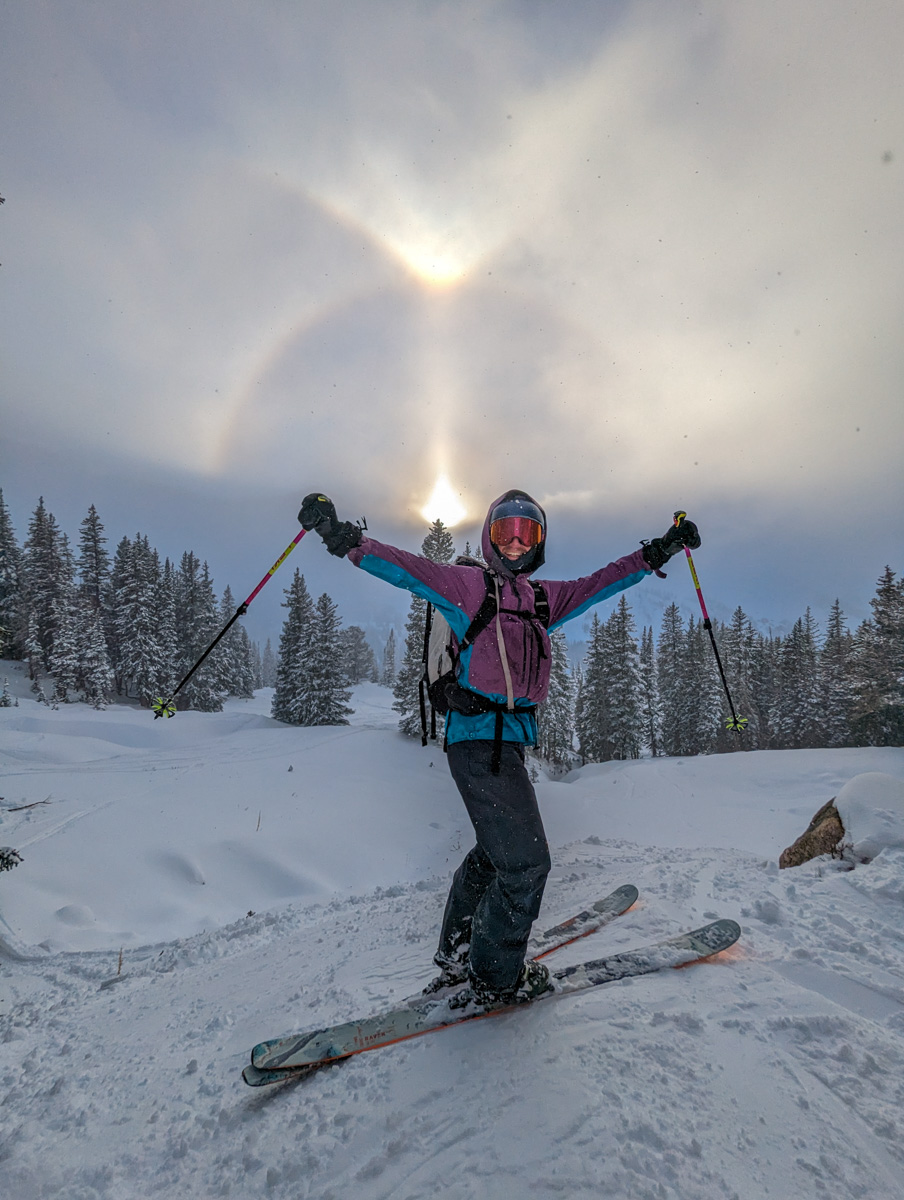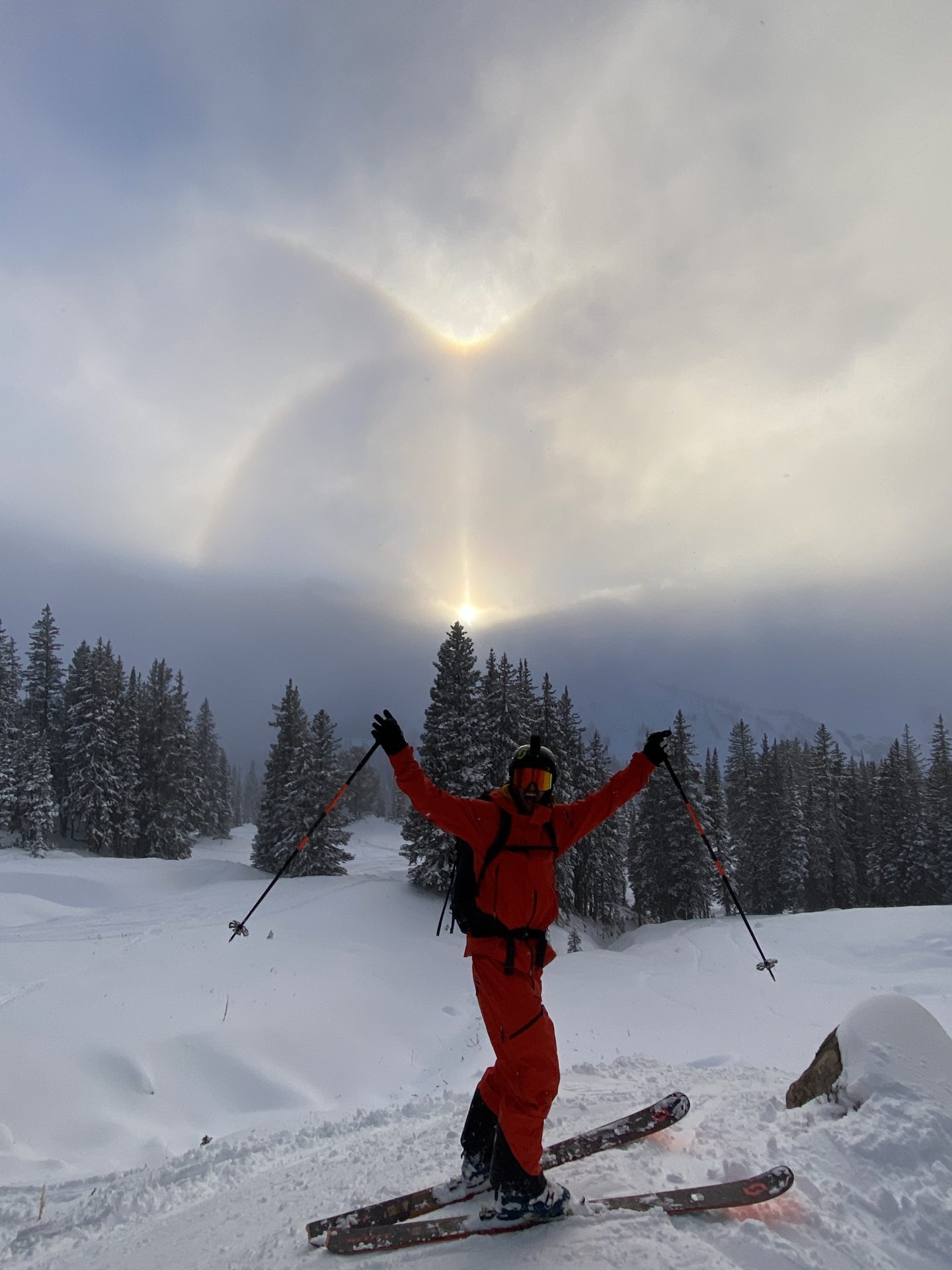
Was it an angel? Or perhaps a portal opening to another dimension? Either way, the vastness of outer space has never felt so nearby. We stopped and gazed for a while at the event unfolding above our puny human heads as we stood in the cold snow of the mountainside at the end of a long ski tour in the Wasatch Mountains yesterday. We stood so long that our joints became stiff from the cold while our eyes stayed glued on the interdimensional light show dancing on in the sky above. “Is it a sun dog?” I asked my touring partner.
What we had seen yesterday on the way back to our car after an accomplishing day of backcountry skiing was in fact one of nature’s most brilliant displays of light—an alignment of water and sky and spirit. It was a complex sun halo, often referred to as a sun dog, which is a bright spot that appears in the sky on either side of the sun at a 22-degree angle, caused by the refraction, or bending, of sunlight by hexagonal ice crystals in high-altitude cirrus clouds. These crystals act like prisms, bending the sunlight and creating the appearance of additional suns. Rainbows are similar; they happen when sunlight is refracted, dispersed, and internally reflected within water droplets in the atmosphere, creating a spectrum of colors that becomes visible to an observer.

For a sun dog to occur, it has to be cold enough for there to be hexagonal ice crystals in cirrus clouds, which is why you normally only see them in winter and at high altitudes. They typically manifest on either side of the sun at an approximate angle of 22 degrees and this specific angle is a result of the refraction of sunlight through those ice crystals in the atmosphere, creating the distinct and symmetrically positioned sun dog.
What we saw yesterday was technically a sun dog, but it was a bit more complex than that. A “complex sun halo consisting of a 22º halo, 46º halo, upper tangent arc, Parry arc, and light pillar” is a more accurate way to describe it. Here’s what that means, according to research gathered through artificial intelligence:
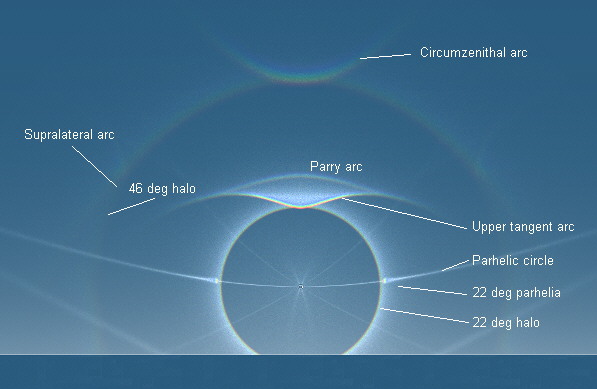
Complex Sun Halos:
Sun halos are bright circles around the sun, often with a radius of approximately 22 degrees. Complex sun halos involve additional features beyond the basic circular halo. Like sun dogs, sun halos are caused by the refraction of sunlight by ice crystals. The specific shape and complexity of the halo depend on the size and orientation of the ice crystals. Various types of halos include the 22-degree halo, the circular halo, and more complex halos with arcs and spots, such as what we saw yesterday in the photos above. They can also include the following:
-
-
- Circumzenithal Arc: An arc that forms a circle around the zenith (the point in the sky directly above the observer).
- Supralateral Arc: An arc that extends horizontally from the sun and intersects the 22-degree halo.
- Upper Tangent Arc: An arc touching the top of the 22-degree halo.
- Parry Arc: A bright spot on the halo tangent to the upper tangent arc.
-

What are the conditions that make them possible?
Sun dogs and sun halos are more likely to occur in cold climates and at higher altitudes where cirrus clouds containing ice crystals are present, however, they can still occur in various locations under the right atmospheric conditions. They occur more often at sunrise and sunset when the sun is at a lower angle in the sky. The crystals responsible for these phenomena are typically hexagonal in nature, plate-shaped, or column-shaped. The light from the sun refracts, or bends, through these crystals which act like prisms, bending the sunlight and creating the appearance of additional suns, halos, arcs, or waves.
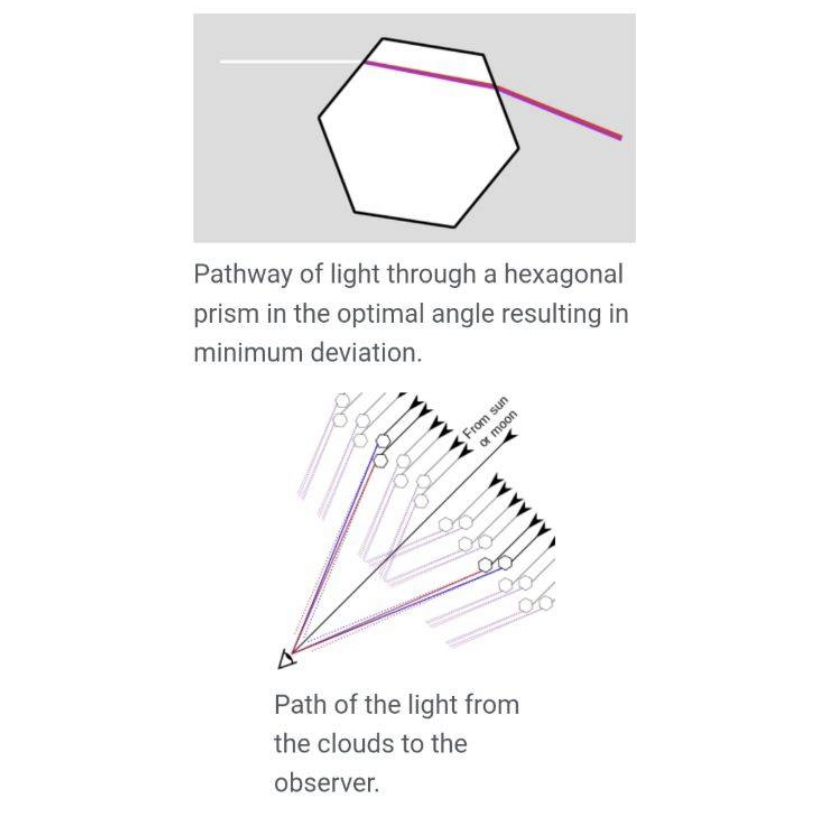
Tips for photographing complex sun halos
Using a polarizing filter can help reduce glare and enhance the visibility of complex sun halos. Wide-angle lenses and tripods are recommended for capturing the best images. Sunrise and sunset are the times of day when you’ll have the greatest chance of seeing one. Make sure to stay alert to rapid atmospheric changes like the sudden appearance of cirrus clouds.
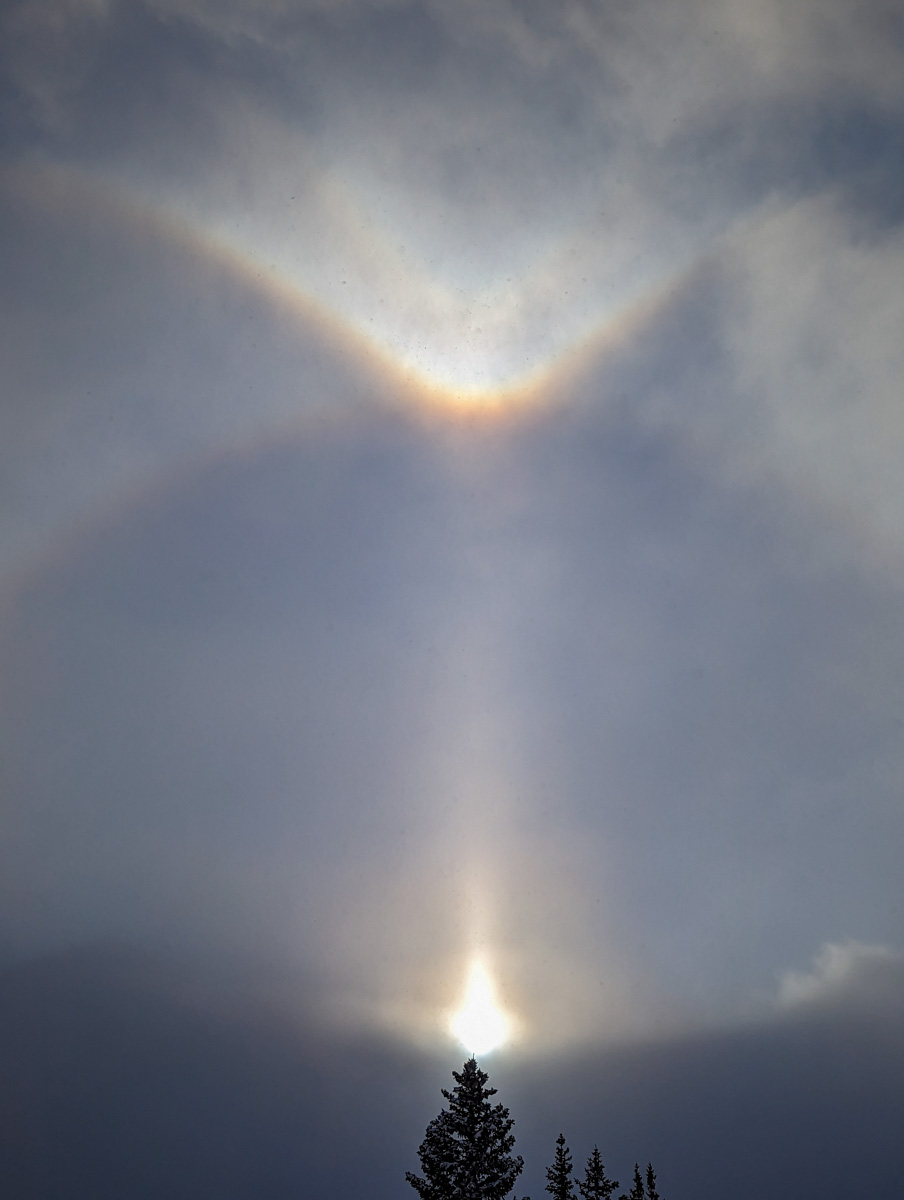
Cultural Significance
In some societies, sun dogs and complex sun halos are considered spiritual guardians or protectors. In ancient Native American cultures, they are often interpreted as positive signs or good omens indicating the presence of benevolent spiritual forces or ancestors watching over the community. Regarding my touring partner and I’s personal life experiences, we have both had close family members and friends die. Many of them have passed on in the mountains—the place we still continue to call home. I don’t know what happens after you die or how the world works, but I do know that those friends and family we so cherished brought us much joy in our lives. Seeing a complex sun phenomenon as pretty as this one also brings us joy, and reminds us of those people we hold near and dear to our hearts. Perhaps an alignment exists there—I don’t know. As in art, it is the viewer who ascribes meaning to something. Some say that the world is meaningless until we give it meaning. Either way, I wouldn’t want to live in a world without meaning, even if it is I who gives forth that meaning. So with whatever these sun dogs and sun halos do mean, if they do mean anything at all, one thing is for certain: they brighten our day.
